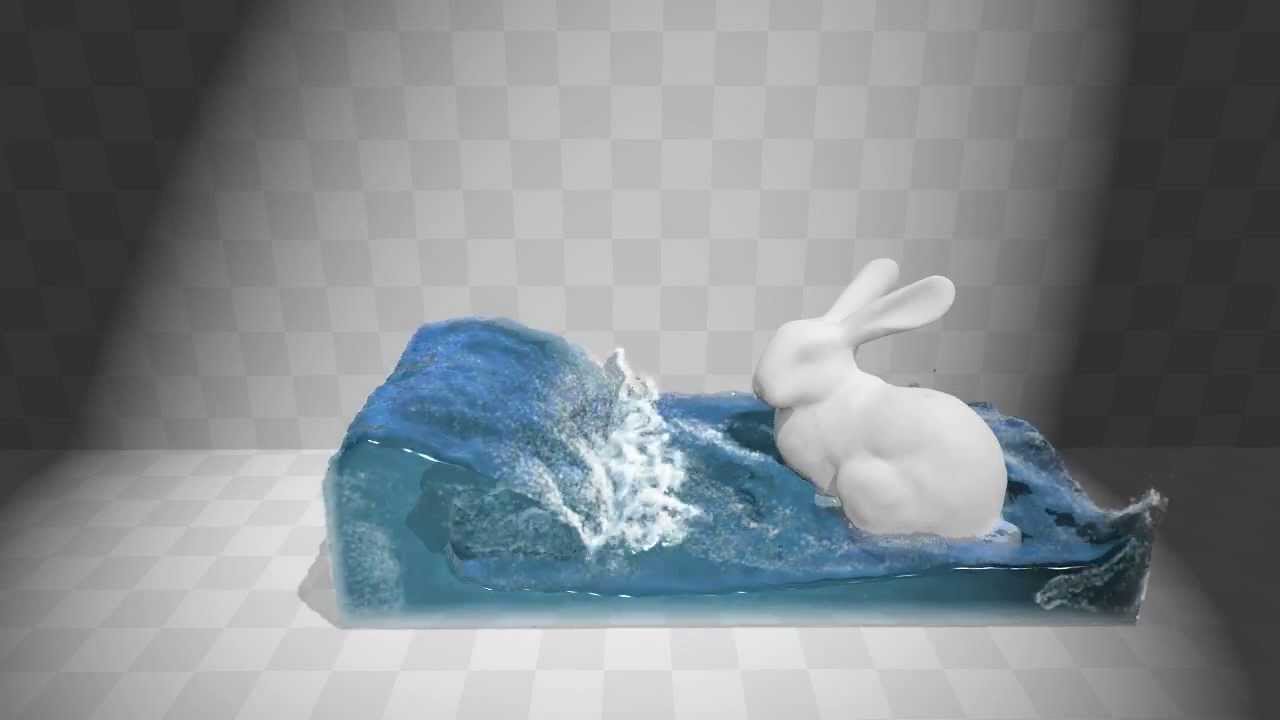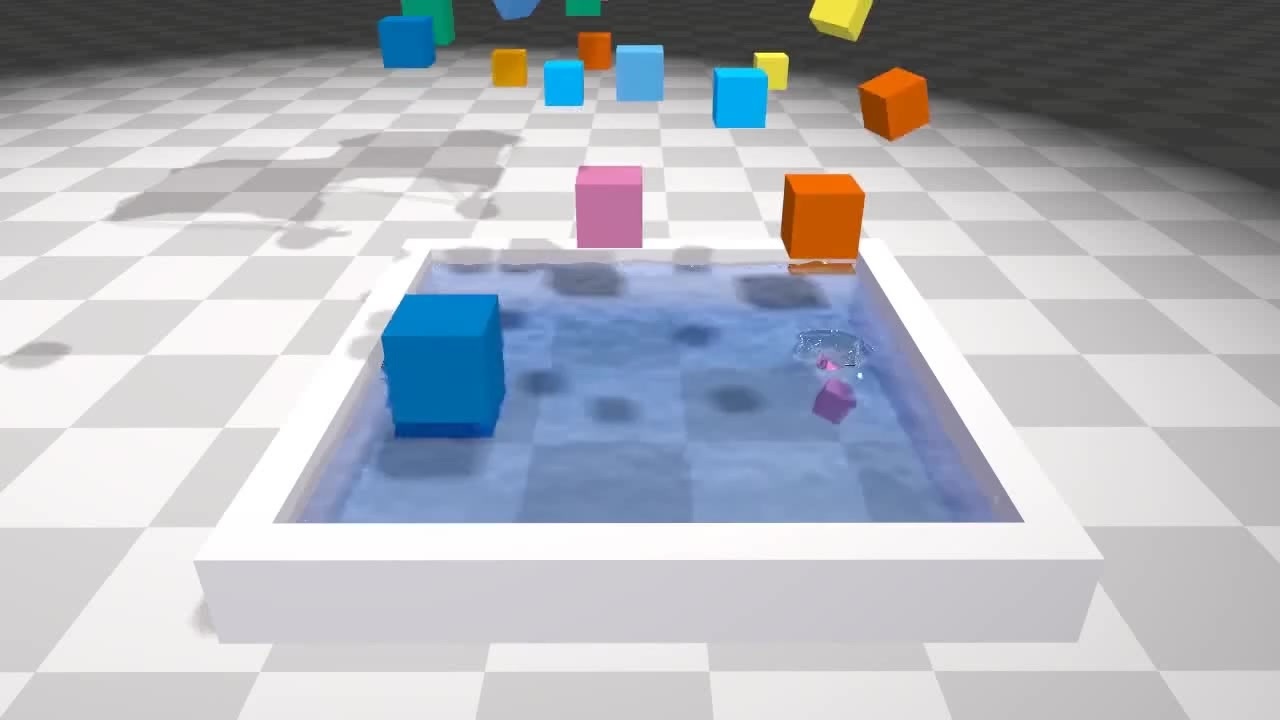Smoothed Particle Hydrodynamics
+ Positional Based Dynamics
by Leon Montealegre
References
| Particle-Based Fluid Simulation for Interactive Application Müller et al. | Unified Particle Physics for Real-Time Applications Macklin and Müller et al. | Position Based Fluids Müller and Macklin |
|---|---|---|
 |
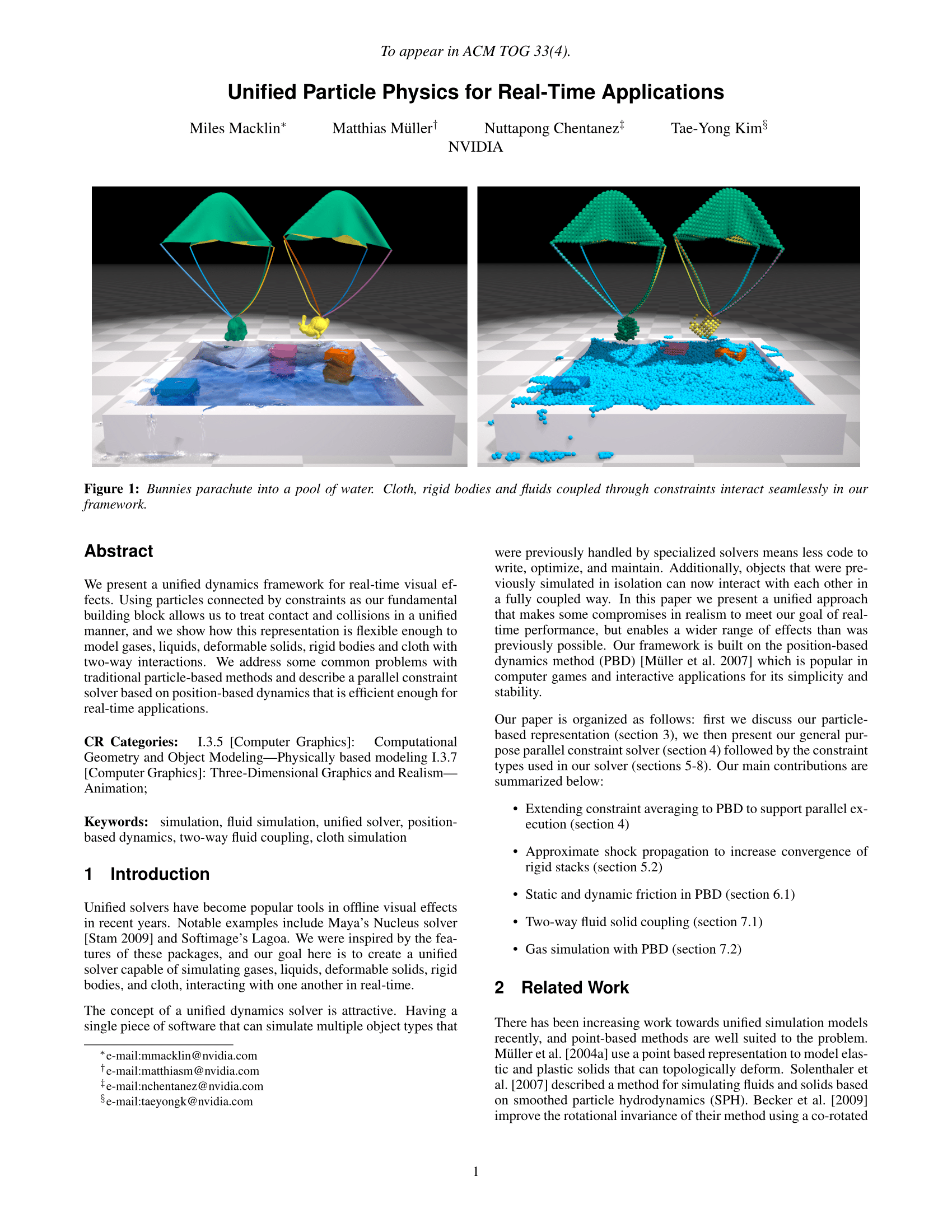 |
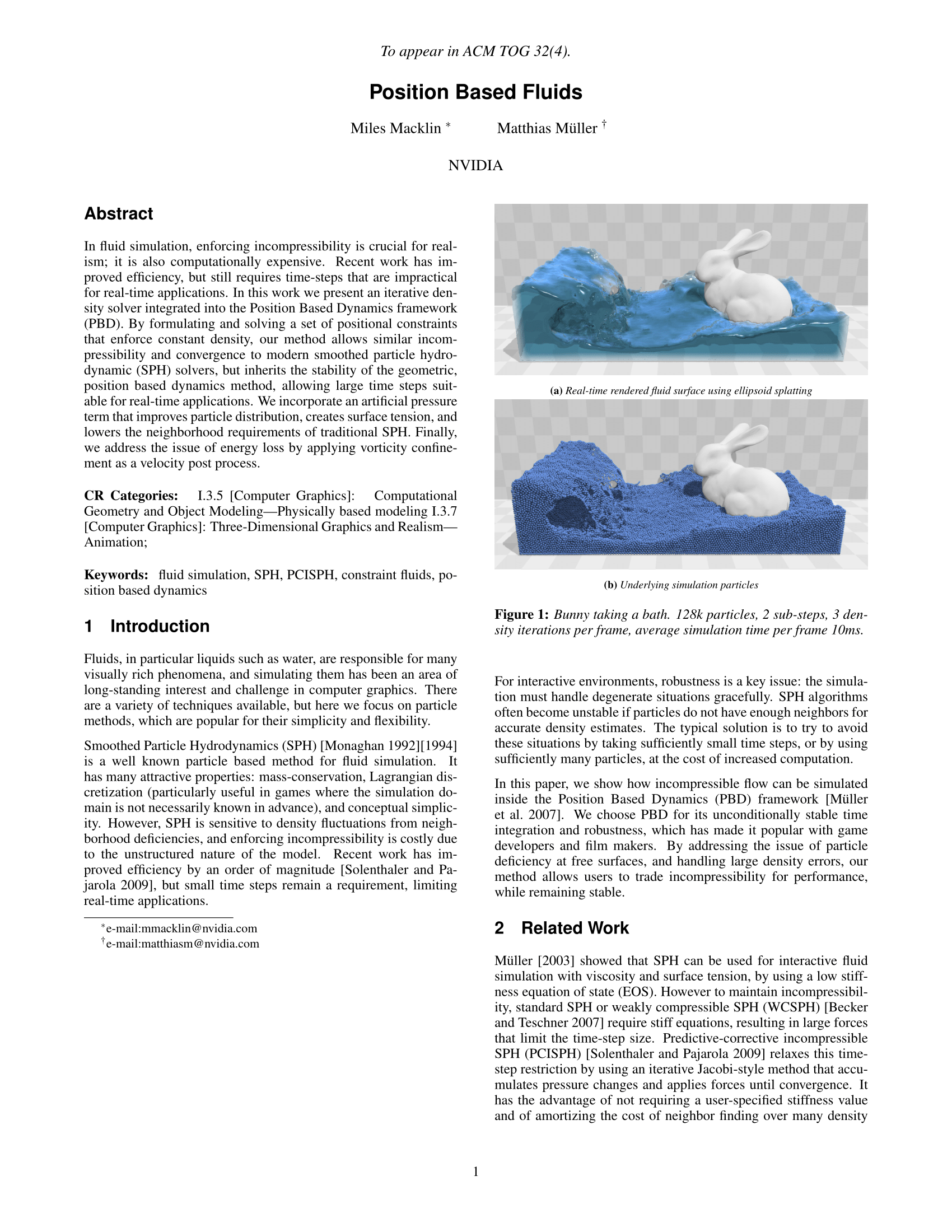 |
SPH: General Idea
- Fluid discretized as particles that each represent an amount of volume
- Each particle has discretized attributes which are interpolated to evalute anywhere

- Attributes interpolated via "kernels"
- Attributes derived from Navier-Stokes Equation
$$ \rho\frac{\partial u}{\partial t} = -\nabla p + \mu\nabla^2u + \rho g $$
- Attributes computed from summing up contributions from neighboring particles, j
$$ A_i = \sum_j \frac{m_j}{\rho_j}A_jW(x_{ij}, h) $$
- Gradient and Laplacian are easy to compute!
$$ \nabla A_i = \sum_j \frac{m_j}{\rho_j}A_j\nabla W(x_{ij}, h) $$
$$ \nabla^2 A_i = \sum_j \frac{m_j}{\rho_j}A_j\nabla^2 W(x_{ij}, h) $$

Density and Pressure
$$ \rho\frac{\partial u}{\partial t} = -\nabla p + \mu\nabla^2u + \rho g $$| Density | Pressure |
|---|---|
|
$$ A = \rho $$ $$ \rho_i = \sum_j m_jW(x_{ij}, h) $$ |
$$ A = p $$ $$ p = k\rho $$ $$ p_i = k(\rho_i - \rho_0) $$ |
Forces
$$ \rho\frac{\partial u}{\partial t} = -\nabla p + \mu\nabla^2u + \rho g $$| External (Gravity) | Pressure | Viscosity |
|---|---|---|
| $$ f^{gravity}_i = \rho_i g $$ |
$$ f^{pressure}_i = -\nabla p_i $$ $$ f^{pressure}_i = \sum_j\frac{m_j}{\rho_j}p_j\nabla W(x_{ij}, h) $$ |
$$ f^{viscosity}_i = \mu\nabla^2 p_i $$ $$ f^{viscosity}_i = \mu\sum_j \frac{m_j}{\rho_j}u_j\nabla^2 W(x_{ij}, h) $$ |
Kernels
3 Types:
- Poly6: Used for most attributes
$$ W_{poly6}(r, h) = \frac{315}{64\pi h^9}
\begin{cases}
(h^2 - r^2)^3 & 0 \leq r \leq h \\
0 & \text{otherwise}
\end{cases}$$
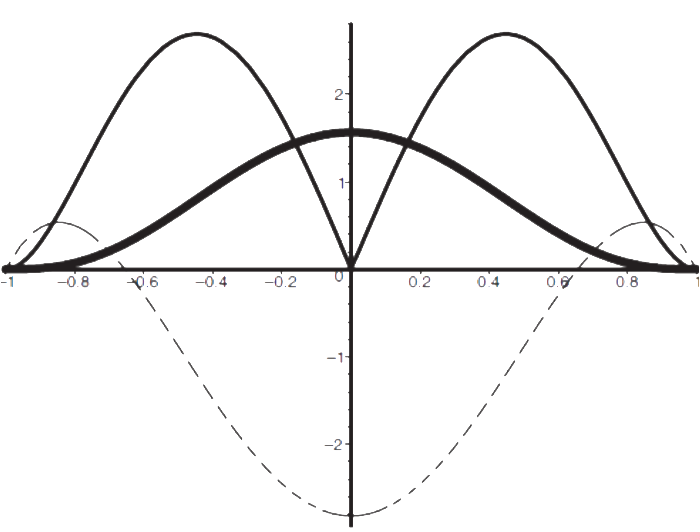
- Spiky: Used for pressure
$$ W_{spiky}(r, h) = \frac{15}{\pi h^6}
\begin{cases}
(h - r)^3 & 0 \leq r \leq h \\
0 & \text{otherwise}
\end{cases}$$
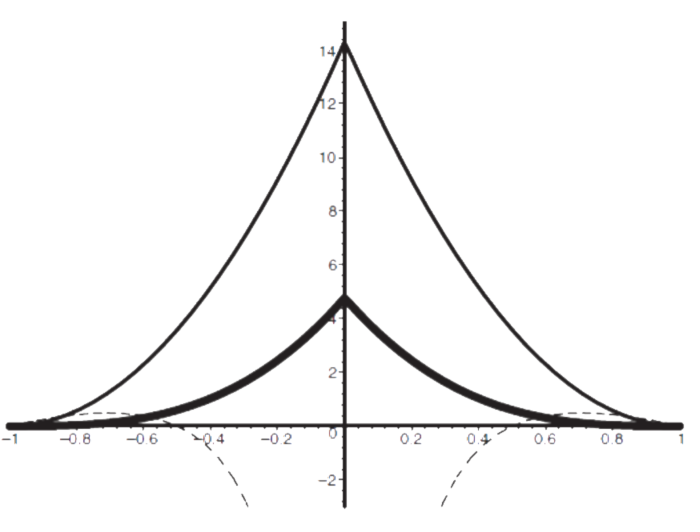
- Viscosity: Used for viscosity
$$ W_{viscosity}(r, h) = \frac{15}{2\pi h^3}
\begin{cases}
-\frac{r^3}{2h^3} + \frac{r^2}{h^2} + \frac{h}{2r} - 1 & 0 \leq r \leq h \\
0 & \text{otherwise}
\end{cases}$$
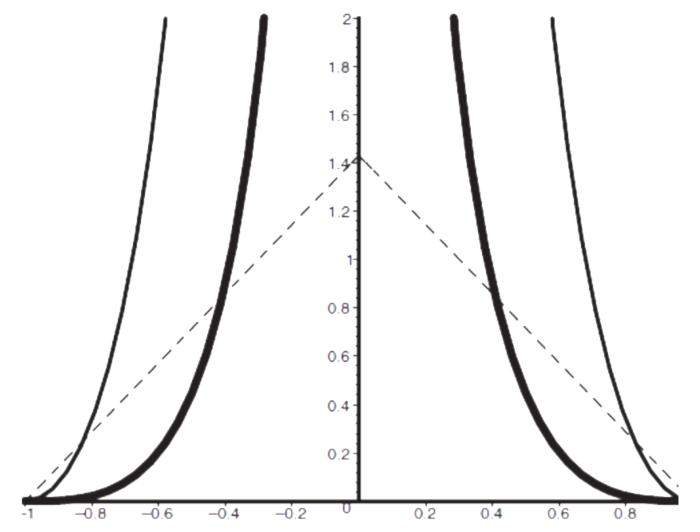



PBD: General Idea
- Particles are connected via "constraints" which replace forces & numerical integration
- Very fast, very stable and produce plausible results
- Provot correction is a type of constraint
| Density Constraint | Distance Constraint (AKA Provot Correction) |
|---|---|
|
$$ C_i(x_i,\ldots,x_n) = \frac{\rho_i}{\rho_0} - 1 $$ $$ C(x + \Delta x) = 0 $$ |
$$ C_i(x_i, x_j) = |x_i - x_j| - d_0 $$ $$ C(x + \Delta x) = 0 $$ |
Demos
Demos
Demos
Demos
Demos
Demos
Demos
Viscosity:
Future Work
- Using Compute Shaders to dramatically increase the efficiency of the simulation
- Better rendering techniques such as Marching Cubes or Ellipsoid Splatting
- Coupled rigidbody simulation/cloth simulation by extending PBD
